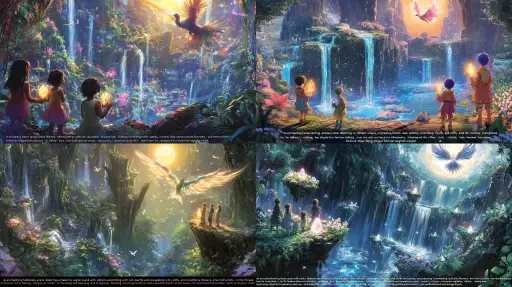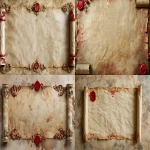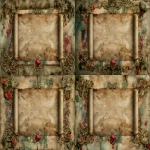Explore the Best AI Image Gallery

Beyond the Brush: How Wearable Tech is Transforming Artistic Creation
The realm of art has always been a space of innovation, constantly pushing boundaries and redefining creative expression. Today, wearable technology stands at the forefront of this evolution, offering artists an unprecedented toolkit to explore new mediums, enhance their craft, and connect with audiences in immersive ways.
From haptic feedback gloves that translate sound into tactile sensations to augmented reality headsets that overlay digital elements onto the physical world, wearable tech is blurring the lines between the virtual and the tangible. This fusion of technology and artistry opens up a world of possibilities for creative exploration and pushes the boundaries of whats considered art.
Applications in Artistic Expression
- Interactive Installations: Wearable sensors can be integrated into sculptures, paintings, or performance pieces, allowing viewers to interact with the artwork and influence its evolution. This creates a dynamic and participatory experience that transcends the traditional passive role of the observer.
- Gesture-Based Art Creation: Motion capture technology embedded in wearable devices enables artists to translate their movements into digital art forms. Dancers, choreographers, and even everyday individuals can become creators, expressing themselves through intuitive gestures and physical actions.
- Sound Visualization: Wearable haptic devices can convert sound waves into tactile vibrations, allowing artists to create immersive auditory experiences that engage multiple senses. Imagine a symphony where the music is not only heard but also felt, creating a truly holistic artistic experience.
- Augmented Reality (AR) Art: AR headsets overlay digital elements onto the physical world, transforming ordinary spaces into canvases for artistic expression. Artists can create interactive murals, virtual sculptures, or even augmented reality performances that blend the real and the imagined.
Ethical Considerations
As with any powerful technology, wearable tech in art raises ethical considerations that require careful attention:
- Data Privacy: Wearable devices collect vast amounts of user data. Its crucial to ensure that this data is handled responsibly, with transparent consent and robust security measures to protect user privacy.
- Accessibility and Inclusivity: Art should be accessible to all. The cost and technical requirements of wearable technology could create barriers for some individuals. Its important to strive for inclusivity and ensure that everyone has the opportunity to participate in this evolving artistic landscape.
- Authenticity and Ownership: As AI-powered tools become more sophisticated, questions arise about the authorship and ownership of art created with wearable tech. Clear guidelines and ethical frameworks are needed to address these complexities.
Future Trends
The convergence of wearable technology and art is still in its early stages. The future holds exciting possibilities:
- Brain-Computer Interfaces (BCIs): BCIs could allow artists to directly translate their thoughts and emotions into artistic creations, unlocking a new level of intuitive expression.
- Personalized Art Experiences: Wearable tech will enable highly personalized art experiences, tailored to individual preferences, moods, and even physiological data. Imagine artworks that respond to your heartbeat or breathing patterns, creating a truly unique and immersive experience.
- Collaborative Creations: Wearable devices will facilitate real-time collaboration between artists across geographical locations. Imagine co-creating a virtual sculpture together, each contributing their unique perspective and adding layers of meaning to the artwork.
The integration of wearable technology into the creative industry is a transformative journey. It empowers artists with new tools for expression, challenges traditional notions of art, and opens up a world of possibilities for audience engagement. As we navigate this evolving landscape, its essential to embrace ethical considerations, foster inclusivity, and continue exploring the boundless potential of wearable tech in shaping the future of art.
](https://images.ai-img.art/thumbnails/150/7599c9e7507c77a975081d554947c9dea123e678a7ece42d30f571f639620598.webp)






](https://images.ai-img.art/thumbnails/150/031692dcf8fbf869092e8cea50f9411a45dadc1f189ea67b8dece8e02952a7e3.webp)



](https://images.ai-img.art/thumbnails/150/efd8a9ad06ef2c72e3378698ad5e592d3d2bf8eff85c25e75db7c9902c7be353.webp)
